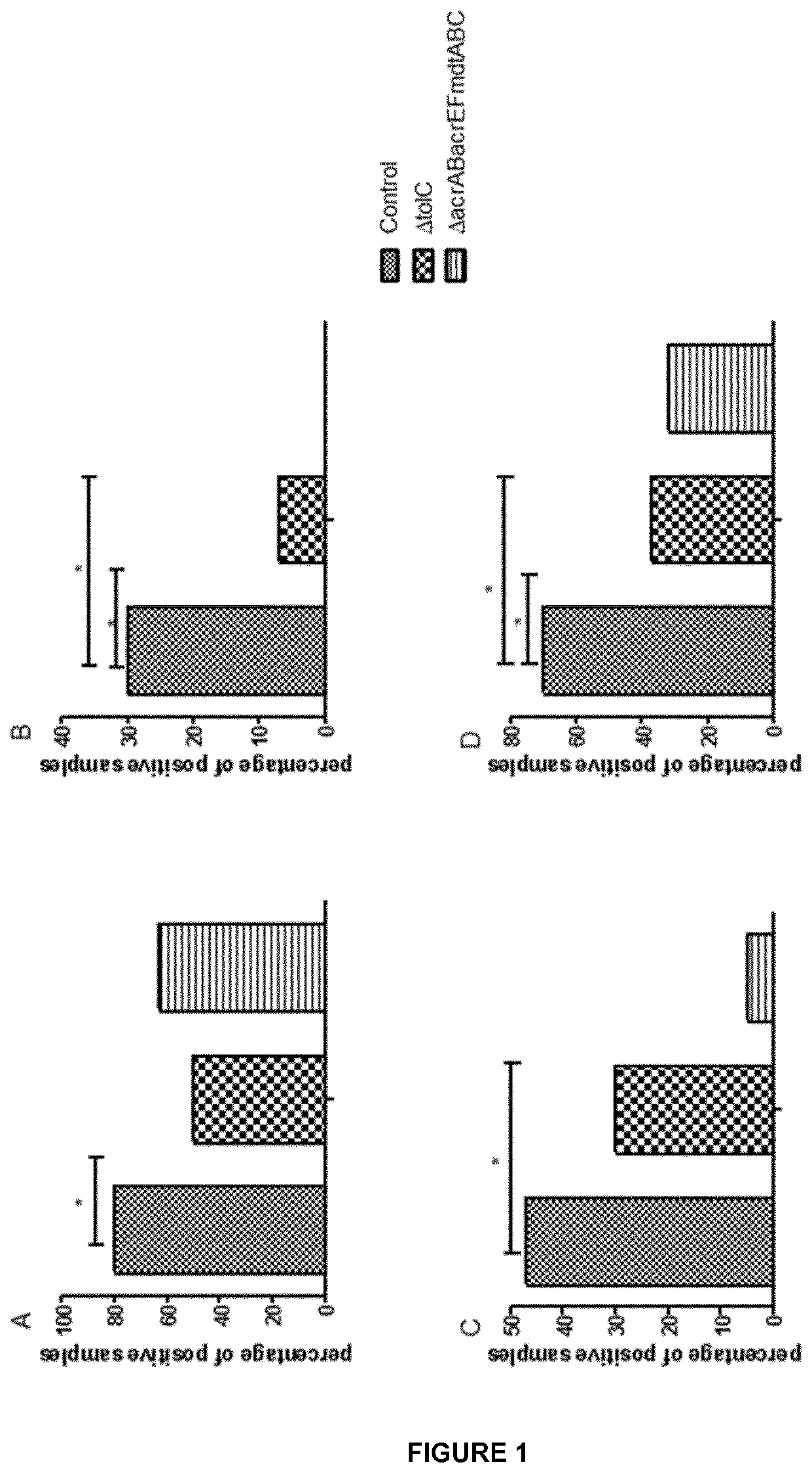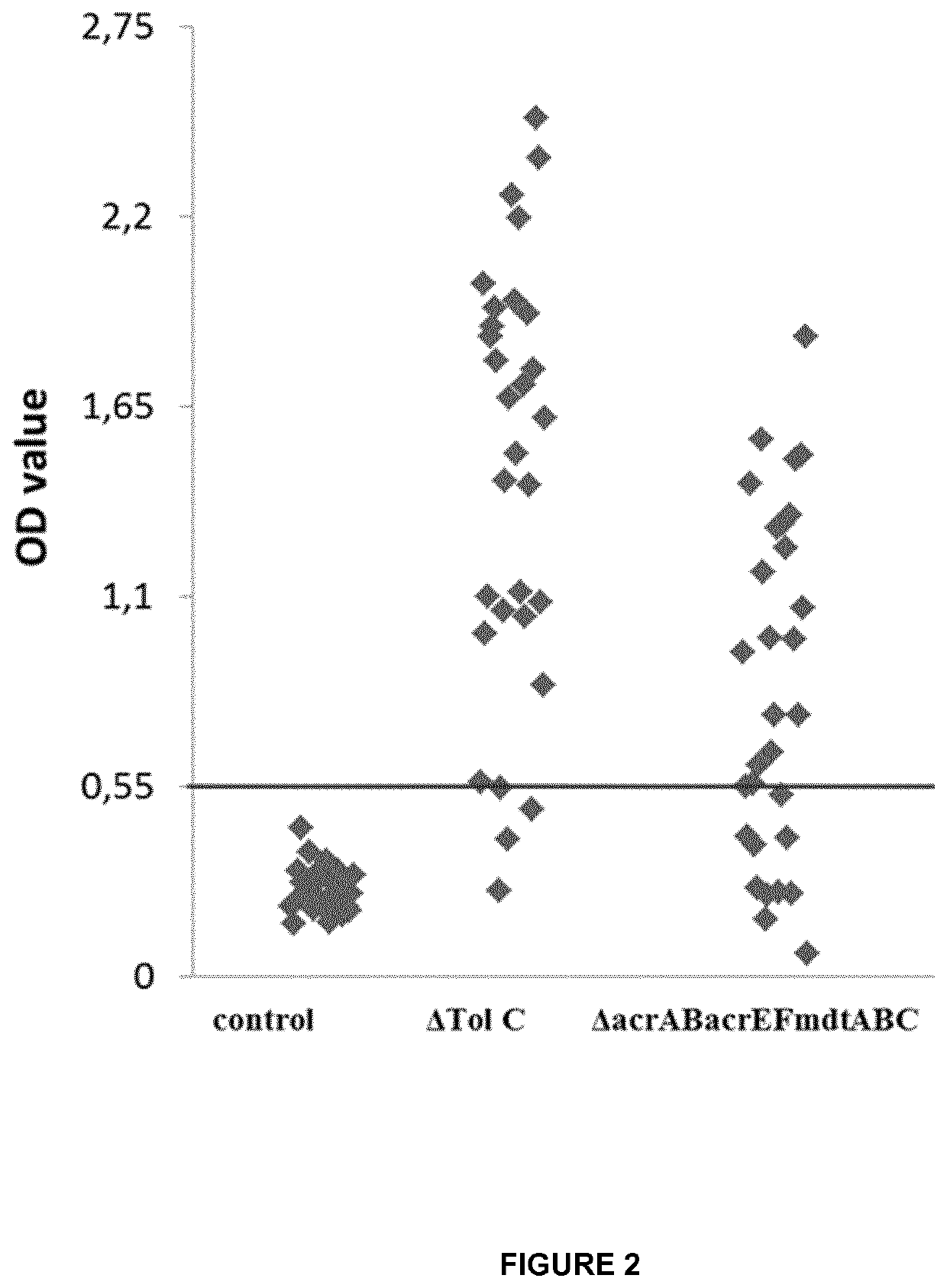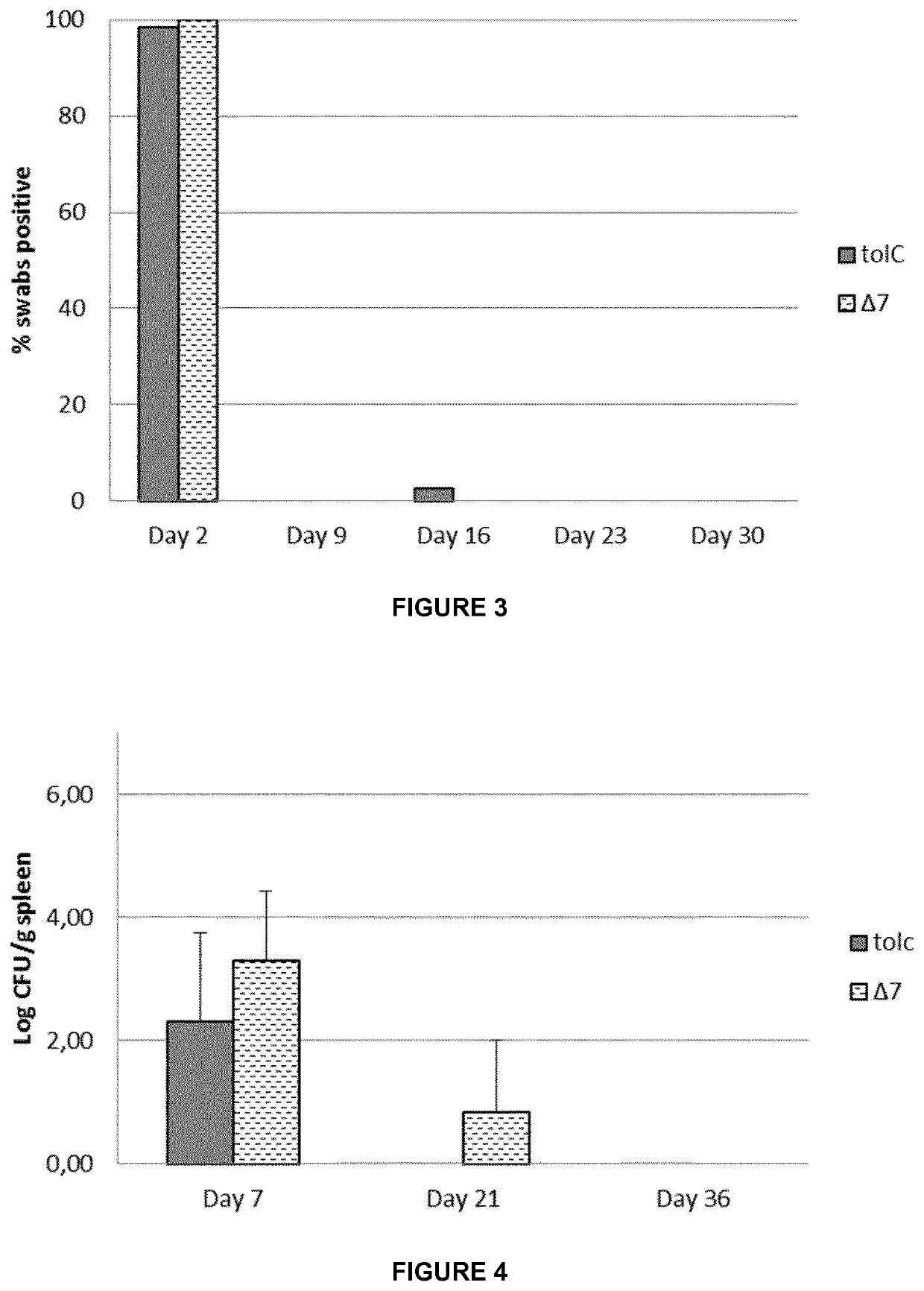Method of reducing egg contamination
a technology of salmonella and egg contamination, applied in the field of salmonella mutant strains, can solve the problems of increasing the burden on both the poultry industry and the healthcare system, the risk of (internal) salmonella infection in eggs can be severe, and the antibiotic treatment of human patients is becoming increasingly difficult. to achieve the effect of reducing the risk of (internal) salmonella infection, preventing, inhibiting and/or treating the risk of salmonella infection in eggs
- Summary
- Abstract
- Description
- Claims
- Application Information
AI Technical Summary
Benefits of technology
Problems solved by technology
Method used
Image
Examples
example 1
Prevention of Egg Contamination by Salmonella Enteritidis after Oral Vaccination of Laying Hens with Salmonella Enteritidis ΔtolC and ΔacrABacrEFmdtABC Mutants
[0057]Materials and Methods
[0058]Vaccine and Challenge Strains
[0059]The vaccine strains ΔtolC and ΔacrABacrEFmdtABC are defined mutants of Salmonella Enteritidis 147 phage type 4. The wild type strain 147 was originally isolated from egg white and is resistant to streptomycin. The strain is known to colonize the gut and internal organs to a high level (Methner, al-Shabibi et al. 1995, Bohez, Dewulf et al. 2008). All mutations were constructed according to the one step inactivation method previously described by Datsenko and Wanner (Datsenko and Wanner, 2000).
[0060]The challenge and vaccine strains were incubated overnight with gentle agitation at 37° C. in Luria Bertani (LB) medium (Sigma, ST. Louis, Mo., USA). To determine bacterial titers, ten-fold dilutions were plated on brilliant green agar (BGA, Oxford, Basingstoke, Hamp...
example 2
A Salmonella Enteritidis and Salmonella Typhimurium tolC and acrABacrEFmdtABC Deletion Mutant are Safe for Use as Live Vaccine Strains in Broilers
[0085]Material & Methods
[0086]Chickens
[0087]One-day-old Ross broiler chickens were obtained from a local hatchery and housed in isolation. Experimental groups were housed in separate rooms in containers on wood shavings. Commercial feed and drinking water were provided ad libitum. Experiments were performed with the permission of the Ethical Committee of the Faculty of Veterinary Medicine, Ghent University, Belgium.
[0088]Vaccine Strains
[0089]Salmonella Enteritidis 147 StrepR (SE147) is a well-characterized strain originally isolated from egg white and was used for the production of the deletion mutants (Methner et al. 1995; Methner et al. 1995; Bohez et al. 2008). A spontaneous nalidixic acid-resistant mutant of Salmonella Typhimurium strain 112910a, originally isolated from a pig stool sample (Van Parys et al. 2012), was used for the prod...
example 3
Evaluation of the Safety of a Salmonella Gallinarum tolC Deletion Mutant Strain for Use as a Vaccine Strain Offering Protection Against Salmonella Gallinarum Infections in Poultry
[0101]Material & Methods
[0102]Chickens
[0103]One-day-old Lohmann Brown laying hens were obtained from a local hatchery and housed in isolation. Experimental groups were housed in separate rooms in containers of 2.4 m2 on wood shavings. Commercial feed and drinking water were provided ad libitum. Experiments were performed with the permission of the Ethical Committee of the Faculty of Veterinary Medicine, Ghent University, Belgium.
[0104]Vaccine Strains
[0105]Salmonella Gallinarum strain 9 (SG9) was used for the production of the deletion mutants. This strain was originally isolated in the United Kingdom (Van Immerseel et al., 2013). Deletion of the tolC gene was done using the one-step inactivation method described by Datsenko and Wanner (Datsenko and Wanner, 2000; Bohez et al., 2006). This yielded a Salmonell...
PUM
| Property | Measurement | Unit |
|---|---|---|
| OD | aaaaa | aaaaa |
| pH | aaaaa | aaaaa |
| volume | aaaaa | aaaaa |
Abstract
Description
Claims
Application Information
 Login to View More
Login to View More - R&D
- Intellectual Property
- Life Sciences
- Materials
- Tech Scout
- Unparalleled Data Quality
- Higher Quality Content
- 60% Fewer Hallucinations
Browse by: Latest US Patents, China's latest patents, Technical Efficacy Thesaurus, Application Domain, Technology Topic, Popular Technical Reports.
© 2025 PatSnap. All rights reserved.Legal|Privacy policy|Modern Slavery Act Transparency Statement|Sitemap|About US| Contact US: help@patsnap.com



